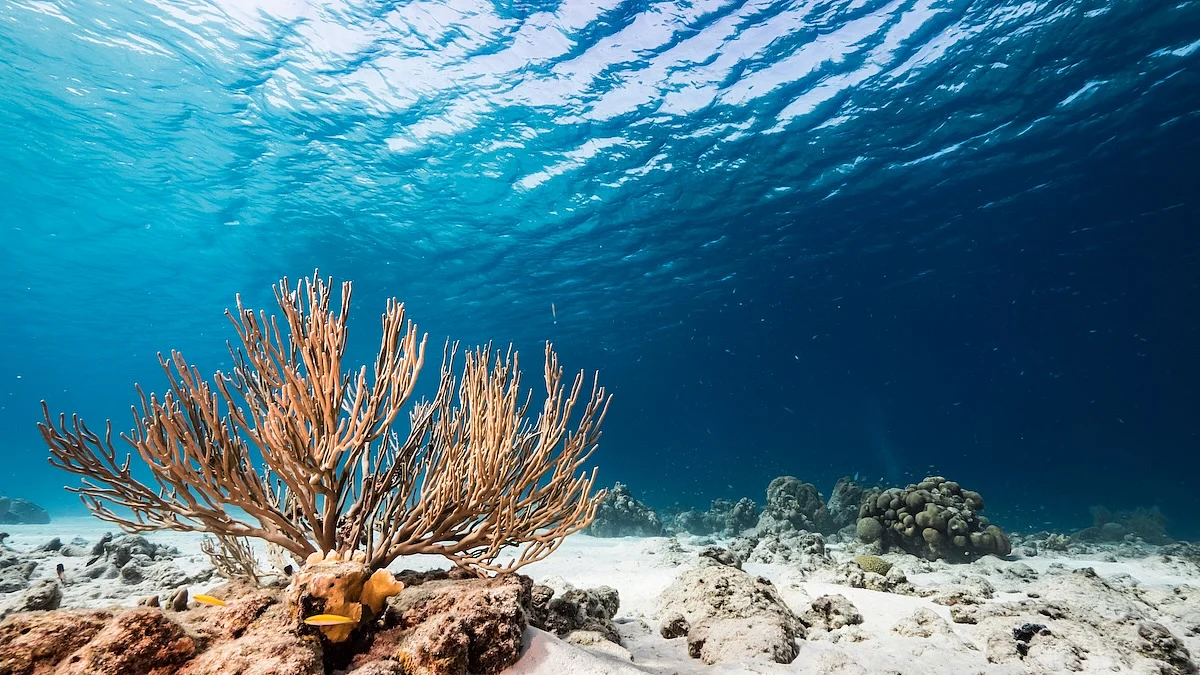Scientists Find New Ecosystem in Deepest Trenches of Pacific Ocean
By Carole Tanzer Miller HealthDay Reporter
 via HealthDay
via HealthDaySUNDAY, August 3, 2025 — A scientific expedition into a region of the Pacific Ocean named for Hades, Greek god of the underworld, has uncovered an other-worldly ecosystem 30,000 feet deep.
"It’s a totally new thing that has not been seen before," said Dominic Papineau, an exobiologist at China’s State Key Laboratory of Deep-sea Science and Intelligence Technology in Sanya.
Papineau is co-author of a groundbreaking research paper published Wednesday in the journal Nature, describing the astonishing array of creatures who live in this daunting and dark environment, sustained by chemicals that leach from the ocean floor.
Researcher Mengran Du told The Washington Post she wasn’t sure what expect when she descended in a three-person submersible into one of the deepest trenches in the Pacific.
What she and others from China’s Institute of Deep-sea Science and Engineering saw when they got there was, she said, "unbelievable."
Like skyscrapers, thick clusters of tubeworms with red-tinged tentacles jutted from the ocean floor, phosphorescent snails scaling them like window washers, she said. In between, white bristly creatures wriggled and writhed.
"People know very little about the bottom of the trench," Du told The Post, adding that researchers had long lacked the "high technology to be able to go there."
The area in question is located between Alaska and Russia in the western Aleutian and Kuril-Kamchatka trenches. The creatures found there "alter our understanding of trench ecosystems," Lisa Levin, a professor emeritus at Scripps Institution of Oceanography who reviewed the findings, said.
Scientists have long studied organisms that thrive around hydrothermal vents. But those native to areas known as cold seeps — where gases like methane and hydrogen sulfite leach from the seafloor at near-freezing temperatures — have been little studied.
Researchers used the manned submersible Fendouzhe to dive into the deepest region of the northwest Pacific, the hadal zone, last summer.
As the U.S., China and other nations investigate ways to tap into mineral wealth of the sea floor, concern about disrupting deep-sea life has emerged. The areas included in the new study are probably too deep for mining, according to The Post, but ocean scientists are eager to learn more about them.
While sunlight sustains life above ground, oceanographers assumed that trench creatures survive by dining on dead animals and organic matter that drifts down, down, down from sunlit waters.
The new research suggests that’s hardly the full story.
Over 40 days, the team found life on 19 of 23 dives, suggesting that hadal ecosystems may be common in the earth’s trenches.
In those trenches, gases from the seafloor analyzed suggest microbes consume organic matter that builds up in the trenches — and then belch.
The methane they expel is then absorbed by bacteria inside mollucks and tubeworms, which go on to produce organic matter that nourishes their hosts. It’s a cycle known as chemosynthesis.
Lesley Blakenship-Williams, a biologist at Palomar College in California who reviewed the new study, said the most surprising finding is that all that nourishing methane comes from microbes in the sediment.
"Flourishing chemosynthetic communities had long been postulated to exist in the trenches, but this is the first paper that documents their existence below 9 kilometers and at multiple locations," she said.
The adaptability of organizations in those trenches is a shot in the arm for scientists searching for evidence of life in oceans on other celestial bodies, including Europa, a moon of Jupiter.
"There is about 3,700 million years of Earth evolution between the oldest animal fossils to the oldest microbial fossils," Papineau told The Post. "So, if deep extraterrestrial oceans ecisted for billions of years, then perhaps similar chemosynthetic-based ecosystems with animallike creatures could also exist there."
Sources
Disclaimer: Statistical data in medical articles provide general trends and do not pertain to individuals. Individual factors can vary greatly. Always seek personalized medical advice for individual healthcare decisions.
Source: HealthDay
Posted : 2025-08-04 00:00
Read more

Disclaimer
Every effort has been made to ensure that the information provided by Drugslib.com is accurate, up-to-date, and complete, but no guarantee is made to that effect. Drug information contained herein may be time sensitive. Drugslib.com information has been compiled for use by healthcare practitioners and consumers in the United States and therefore Drugslib.com does not warrant that uses outside of the United States are appropriate, unless specifically indicated otherwise. Drugslib.com's drug information does not endorse drugs, diagnose patients or recommend therapy. Drugslib.com's drug information is an informational resource designed to assist licensed healthcare practitioners in caring for their patients and/or to serve consumers viewing this service as a supplement to, and not a substitute for, the expertise, skill, knowledge and judgment of healthcare practitioners.
The absence of a warning for a given drug or drug combination in no way should be construed to indicate that the drug or drug combination is safe, effective or appropriate for any given patient. Drugslib.com does not assume any responsibility for any aspect of healthcare administered with the aid of information Drugslib.com provides. The information contained herein is not intended to cover all possible uses, directions, precautions, warnings, drug interactions, allergic reactions, or adverse effects. If you have questions about the drugs you are taking, check with your doctor, nurse or pharmacist.
Popular Keywords
- metformin obat apa
- alahan panjang
- glimepiride obat apa
- takikardia adalah
- erau ernie
- pradiabetes
- besar88
- atrofi adalah
- kutu anjing
- trakeostomi
- mayzent pi
- enbrel auto injector not working
- enbrel interactions
- lenvima life expectancy
- leqvio pi
- what is lenvima
- lenvima pi
- empagliflozin-linagliptin
- encourage foundation for enbrel
- qulipta drug interactions
